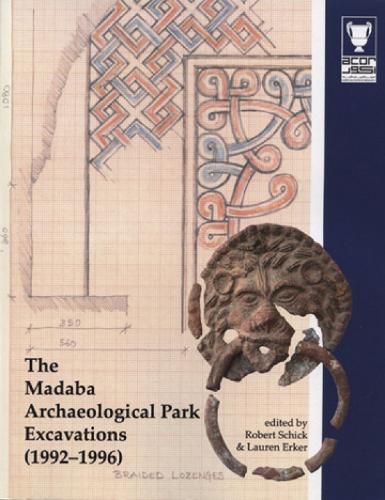Readings Newsletter
Become a Readings Member to make your shopping experience even easier.
Sign in or sign up for free!
You’re not far away from qualifying for FREE standard shipping within Australia
You’ve qualified for FREE standard shipping within Australia
The cart is loading…






In 1991, the Ministry of Tourism and Antiquities of Jordan, the American Center of Research (then known as the American Center of Oriental Research), and the United States Agency for International Development (USAID) initiated a project to create an archaeological park in the heart of Madaba. The park includes a well-preserved stretch of what appears to be a Late Roman street and buildings from the Roman, Byzantine, and Early and Late Islamic periods. The excavations also yielded finds from the Middle Islamic period as well as the Modern period. The goals of the park project were to explore the history of Madaba, to protect its archaeological heritage from destruction, and to revitalize downtown Madaba.
This volume-more than 450 pages and well illustrated-presents the results of the excavations of 1992 to 1993, with brief coverage of the follow-up excavations in 1994 and 1995-1996, focusing on the western half of the Madaba Archaeological Park, around the Burnt Palace and the Roman Street to its south. Pierre Bikai, Ghazi Bisheh, Karen Britt, Alysia Fischer, Debra Foran, Jaakko Froesen, James Pokines, Robert Schick and Thomas Maria Weber-Karyotakis contributed to the book.
$9.00 standard shipping within Australia
FREE standard shipping within Australia for orders over $100.00
Express & International shipping calculated at checkout
In 1991, the Ministry of Tourism and Antiquities of Jordan, the American Center of Research (then known as the American Center of Oriental Research), and the United States Agency for International Development (USAID) initiated a project to create an archaeological park in the heart of Madaba. The park includes a well-preserved stretch of what appears to be a Late Roman street and buildings from the Roman, Byzantine, and Early and Late Islamic periods. The excavations also yielded finds from the Middle Islamic period as well as the Modern period. The goals of the park project were to explore the history of Madaba, to protect its archaeological heritage from destruction, and to revitalize downtown Madaba.
This volume-more than 450 pages and well illustrated-presents the results of the excavations of 1992 to 1993, with brief coverage of the follow-up excavations in 1994 and 1995-1996, focusing on the western half of the Madaba Archaeological Park, around the Burnt Palace and the Roman Street to its south. Pierre Bikai, Ghazi Bisheh, Karen Britt, Alysia Fischer, Debra Foran, Jaakko Froesen, James Pokines, Robert Schick and Thomas Maria Weber-Karyotakis contributed to the book.